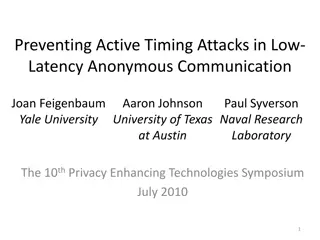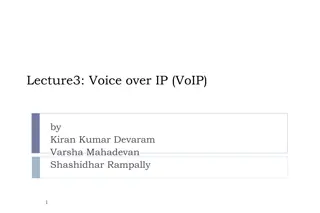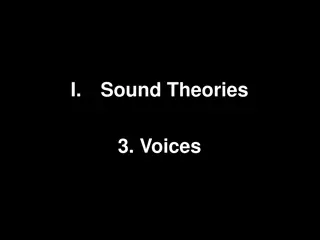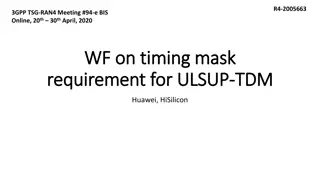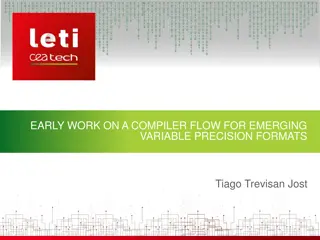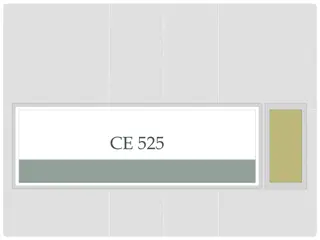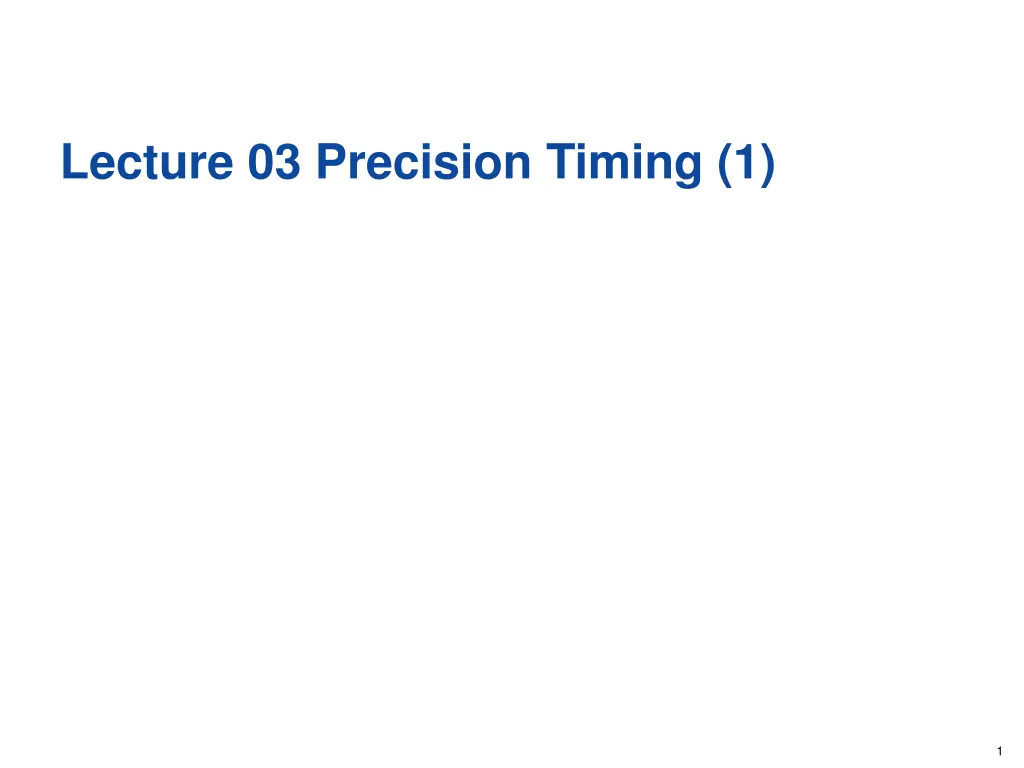
Understanding Precision Timing: Frequency, Atomic Clocks, and Components
Explore the world of precision timing with topics such as frequency, atomic clock technologies, OCXOs, and component clocks. Learn about the importance of frequency stability, accuracy, and different types of atomic clocks like Rubidium, Cesium, and Hydrogen Maser. Gain insights into the functioning of atomic (passive) clocks, component clocks, and various technologies utilized in time measurement.
Download Presentation

Please find below an Image/Link to download the presentation.
The content on the website is provided AS IS for your information and personal use only. It may not be sold, licensed, or shared on other websites without obtaining consent from the author. If you encounter any issues during the download, it is possible that the publisher has removed the file from their server.
You are allowed to download the files provided on this website for personal or commercial use, subject to the condition that they are used lawfully. All files are the property of their respective owners.
The content on the website is provided AS IS for your information and personal use only. It may not be sold, licensed, or shared on other websites without obtaining consent from the author.
E N D
Presentation Transcript
Agenda Frequency & Time OCXOs Atomic Clock Technology Components Clock Portfolio Miniature Atomic Clock (MAC) Chip Scale Atomic Clock (CSAC) Low Noise CSAC (LN CSAC) Microsemi Systems Clocks Portfolio Cesium Technology and Products Rubidium Clocks Masers: hydrogen maser, frequency standard 2
What is Frequency Frequency = the number of cycles per second Ideal frequency source generates a pure, repeatable sine wave 3
What is Frequency Stability & Accuracy Courtesy John Vig 4
OCXOs 5
OCXOs 6
ADEV (Allan deviation) OCXOs TDEV (time deviation) MTIE (maximum time interval error) 7
OCXOs 8
OCXOs 9
Atomic Clock Technologies Rubidium Gas Cell: 6,834,682,610.904 Hz (3e-13) Cesium Beam: 9,192,631,770 Hz (4.7e-15 @ 1e4 s) Hydrogen Maser: 1,420,405,751.768 Hz Fountains use cesium, rubidium Stored Ions use mercury, ytterbium Optical Clocks use mercury, calcium The resonant frequency of atoms does not age the apparatus to interrogate or confine atoms can in some atomic clocks 10
Atomic (Passive) Clock Basics Synthesizer Atoms Detector RF Output Oscillator Servo Divider Clock Output Stimulate an energy state change in the atoms Detect when resonant frequency is achieved Servo the oscillator to maintain optimal performance 11
Microsemi Component Clocks Portfolio Rubidium Clocks GPSDO s (GPS disciplined oscillator) CSAC (chip scale atomic clock) Industry Leader in atomic clock technology 13
Component Clocks Positioning XPRO High- Performance Rubidium SA.35m Miniature Atomic Clock Quantum Chip Scale Atomic Clock (CSAC) SA.22C Precision Rubidium Oscillator Spec\Type Dimensions (cm) 12.7 x 9.2 x 3.9 7.82 x 11.2 x 2.31 5.1 x 5.1 x 1.8 1.6 x 1.39 x 0.45 Volume 456 cm3 203 cm3 < 47 cm3 < 17 cm3 Power @25 C 13 W 10 W 5 W <120 mW ADEV @ 1 sec < 1E-11 <3E-11 <3E-11 <2.5E-10 Highest Performance Performance Good SWaP Differentiator Legacy Telecom Best SWaP Microsemi s atomic clocks meet a variety of application needs 14
Allan Deviation (ADEV) M = 2 : number of samples T = : time between measurements : measurement time = averating time 15
Performance Versus Power & Size 1-Sec ADEV Monthly Aging Rate Product Power @25 C Volume 1E-11 < 1E-11 13 W 456 cm3 XPRO Power Consumption, Size 3E-11 5E-11 10 W 203 cm3 Performance SA.22c 3E-11 1E-10 5 W 47 cm3 SA.3Xm 2.5E-10 3E-10 120 mW 17 cm3 CSAC 16
17 17








